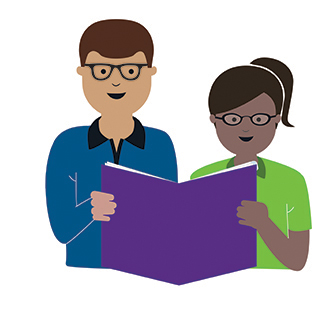What do you need to know?
 In the first of our series of Inclusion in schools articles, we take a look at Dyslexia. If a student has dyslexia, they have difficulty with reading and spelling. They struggle to match the letters on the page with the sounds those letters, and combinations of letters, make. This means that students with dyslexia can find it hard to read fluently and spell words correctly. It’s important to note, however, that this condition doesn’t mean the person isn’t intelligent. In fact, although people with dyslexia are usually slow readers, they are often quick-thinking, creative and have strong reasoning abilities.
In the first of our series of Inclusion in schools articles, we take a look at Dyslexia. If a student has dyslexia, they have difficulty with reading and spelling. They struggle to match the letters on the page with the sounds those letters, and combinations of letters, make. This means that students with dyslexia can find it hard to read fluently and spell words correctly. It’s important to note, however, that this condition doesn’t mean the person isn’t intelligent. In fact, although people with dyslexia are usually slow readers, they are often quick-thinking, creative and have strong reasoning abilities.
Dyslexia is quite common. The Australian Dyslexia Association estimates that around 10% of Australians are affected. There is no ‘cure’ for dyslexia, however, with the right supports, students with the condition can overcome its challenges and pursue a successful career like Albert Einstein, Walt Disney or John Lennon.
Signs that a child has dyslexia
If a child is having difficulty learning in your classroom, it’s important not to dismiss their ongoing underachievement as not caring or not bothering to put the effort into their work. Teachers should learn about the struggles and barriers that kids with dyslexia face and keep an eye out for any signs that a child may be dealing with this complex learning difficulty.
Common signs that a child has dyslexia include, they:
- are intelligent and articulate, but struggle to read, write or spell
- get confused by letters, numbers and words
- do well in oral tests but not written tests
- seem to have problems with their vision but have no problem with their eyes
- often ‘zone out’ or daydream
- have difficulty putting their thoughts into words
- have difficulty telling the time
- get frustrated about school reading or testing
- struggle to keep attention
- learn best through hands-on experience, demonstrations, experimentation, observation and visual aids.
Teaching a child with dyslexia
Once you’ve identified a child with dyslexia, it’s important to create a supportive environment and begin helping them to learn.
Some simple ways to do this include:
- making sure text is well spaced when writing on the whiteboard
- using different colours for each line of text on the whiteboard
- not pushing them to read beyond their reading level, as this will demotivate them
- not asking them to read aloud to the class
- introducing new words slowly and reinforcing them with repetition
- showing them that reading can be fun
- using audiobooks where available
- accepting verbal answers where possible
- for spelling, providing them with a short list of structure-based words for tests
- helping them learn to spot their errors through proofreading
- understanding that 90% of dyslexic children will also struggle with maths and support them with this
- avoiding marking in red pen as this can be very disheartening
- including positive comments in feedback
- being aware of the time allocated to a task, a child with dyslexia may need to work a lot harder and take more time to complete it.
If there is a child with dyslexia in your classroom, it’s important to remember that they have many strengths and it’s possible to integrate them into the classroom with the right teaching methods and strategies. Be as flexible as possible to find the methods that best suit the student.
